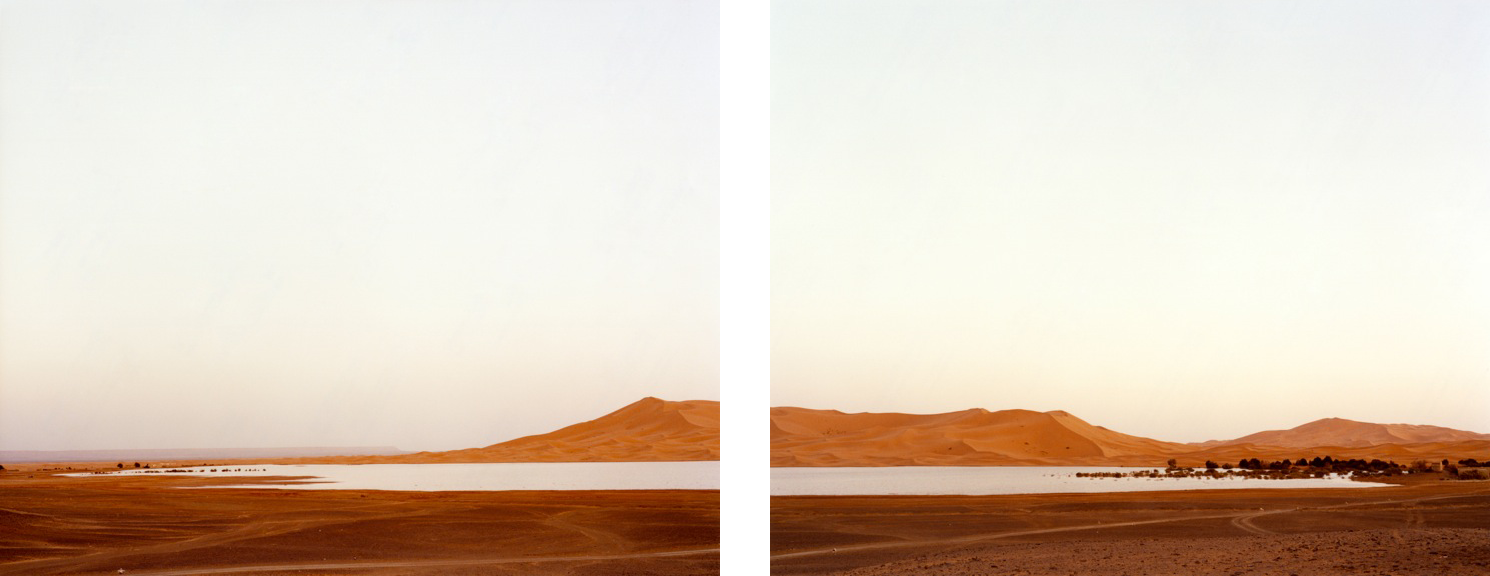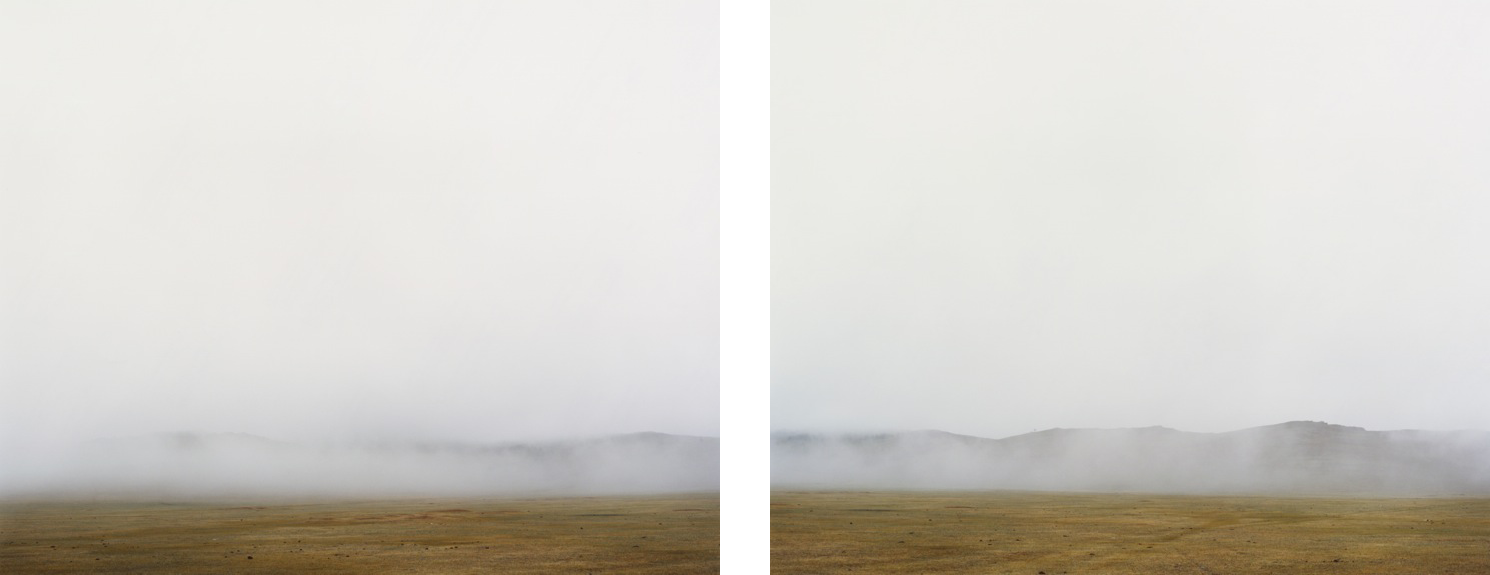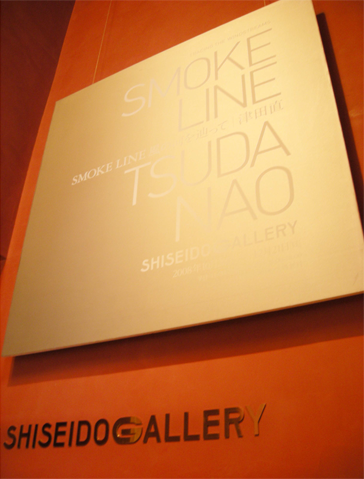SMOKE LINE
津田が辿り着いた答えは、「風」であった。始まりも終わりもなく、留まることなく「移動」し続ける「風」。「いま」「ここ」も千年前も、そしておそらく千年先も流れているであろう「風」を、世界を繋ぎ保つ存在のひとつと考え、植物のゆらぎなどを介さずに視ることから制作をスタートさせた。
「風」 を知るには「風」と共に生き、「風の民」ともいうべき遊牧民に教えを乞うのが一番だ。津田が風に導かれ辿り着いたのは、遊牧民や少数民族がいまも昔ながらの生活を続けている、中国、モロッコ、モンゴルの3地域。津田はそれぞれの地域に暮らす「風の民」を訪ね、そして共に時を過ごした。
長い旅のなかで撮影した風景は、帰国後現像、印画紙への焼付というプロセスを経てスガタを現す。隔たった3つの地域で、アングルや距離を変えて撮影した風景が、何故か一筋の帯として違和感無く結ばれて、津田の新作は完成した。
(中略)
遊牧民は別の土地に移動するとき、「香」を焚くのだという。彼らが立ち去ったあとに煙が立ち上り、「風」にのって流れていく。自然のダイナミズムに「人」の営みがそっと寄り添って、世界を結び保つ透明な帯が浮かびあがる。
(「SMOKE LINE」資生堂展覧会カタログ、森本美穂テキストより)
The answer Tsuda came up with was “wind.”
“Wind” has no start or finish, it never stops and just continues “moving.” Tsuda thought that wind is “now,” “here,” 1,000 years ago and probably 1,000 years hence it will still be flowing and continue to join the world, so started to produce the work while choosing to overlook its more obvious effects on such things as plant life.
To know “wind” requires living with “wind,” so the best way was to find out from nomads, who probably should be called “people of the wind.” Tsuda was carried by the winds to three areas in China, Morocco and Mongolia where nomads or minority tribes continue now to lead a lifestyle they have maintained since the distant past. Tsuda met the “people of the wind” in each of these regions and spent time with all of them.
Scenes he photographed during his long journey were developed upon returning to Japan and printed on to developing paper to give them a form. Several photographs of scenes taken at different angles from the three different regions were joined together as one in a single belt without creating a sense of being out of place and Tsuda’s new work was complete.
(An omission)
When nomads move to a different area, they are said to burn incense. When they leave a place, the smoke rises in the “wind” and is carried off. When the lives of people are gently inserted into the dynamism of nature, the idea of a world linked by a transparent belt floats to the surface.
(From “SMOKE LINE” exhibition catalog of Shiseido Gallery, text by Miho Morimoto)













